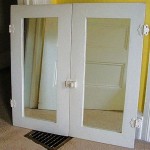How Do I Mirror My iPhone to Roku Without Internet?
Mirroring an iPhone screen to a Roku device typically relies on a network connection, either via Wi-Fi or, in some cases, Ethernet. This network facilitates communication between the two devices, allowing the Roku to receive and display the content streamed from the iPhone. While convenient, this dependency on a network connection presents a challenge when internet access is unavailable or unreliable.
Achieving screen mirroring without internet requires understanding the fundamental principles of how screen mirroring technologies operate. Standard screen mirroring protocols, such as AirPlay, utilize the local network to transmit data. AirPlay, specifically designed for Apple devices, allows wireless streaming of content from an iPhone or iPad to an Apple TV or AirPlay-compatible smart TV. Roku devices, however, do not natively support AirPlay.
Given Roku's lack of native AirPlay support, some users might consider third-party apps that claim to bridge this gap. It's crucial to understand that most of these apps still require a network connection to function. They essentially create a local network between the iPhone and Roku, even without access to the broader internet. Therefore, while these apps might facilitate mirroring within a local network, they do not offer a true offline mirroring solution.
One potential alternative involves leveraging portable travel routers. These devices create a localized Wi-Fi network, independent of an internet connection. By connecting both the iPhone and Roku to this private network, users can potentially achieve screen mirroring. This method relies on the travel router’s ability to facilitate communication between devices, essentially mimicking the role of a standard Wi-Fi router.
Configuring the travel router correctly is essential for successful mirroring. Users typically need to configure the router's SSID and password, ensuring both the iPhone and Roku connect to the same network. The process might vary depending on the specific travel router model. Consulting the router’s instruction manual is recommended for detailed setup guidance.
Even with a travel router, users might encounter compatibility limitations. Some streaming apps on the iPhone might restrict content playback outside a standard internet-connected network. This restriction arises from digital rights management (DRM) protocols designed to prevent unauthorized content distribution. Content protected by DRM might not play smoothly or at all, even within a local network established by a travel router.
Another factor to consider is the potential for latency or lag when mirroring without a stable internet connection. The speed and stability of the local network created by the travel router directly impact the mirroring performance. A weaker signal or limited bandwidth can lead to noticeable delays between actions on the iPhone and their reflection on the Roku screen.
For mirroring specific content types like photos or videos stored directly on the iPhone, some Roku devices offer USB ports. By transferring the files to a USB drive and connecting it to the Roku, users can bypass the need for screen mirroring altogether. This method, however, is not suitable for real-time screen mirroring or streaming content from apps.
Connecting the iPhone to the Roku via a wired connection is not directly possible. Roku devices primarily receive input wirelessly or through HDMI ports designed for external devices like Blu-ray players or game consoles. Direct wired connection between an iPhone and a Roku is not a supported configuration.
It’s important to manage expectations regarding offline mirroring. The seamless experience often associated with online screen mirroring might not be replicable without a robust network connection. The methods discussed above offer potential workarounds, but they each come with limitations and potential challenges.
Before investing in additional hardware like travel routers, users should carefully assess their specific needs and the type of content they intend to mirror. If accessing online content is essential, these offline methods will likely prove inadequate. For locally stored content, however, exploring these alternatives might offer a viable solution.
Understanding the technical limitations and inherent dependencies of screen mirroring technologies is crucial for making informed decisions about achieving offline mirroring functionality. While true offline mirroring between an iPhone and Roku without any network connection isn't directly supported, alternative approaches using local networks can offer some degree of functionality, albeit with limitations.

How To Mirror Iphone Roku Without Wifi 5 Steps With Pictures

How To Mirror Iphone Roku Without Wifi 5 Steps With Pictures

How To Mirror Iphone Roku Tv Without Wifi Vulomedia

How To Mirror Iphone Roku Without Wifi 5 Steps With Pictures

How To Mirror Iphone Roku Without Wifi 5 Steps With Pictures

3 Easy Methods How To Mirror Iphone Rokutv Airdroid

3 Ways To Mirror Iphone Roku Tv With Without Wi Fi
How To Mirror Your Iphone A Roku Tv

How To Mirror Iphone Roku Without Wifi 5 Steps With Pictures
What Is The Easiest Way To Screen Mirror An Iphone Roku Without Wifi Quora








